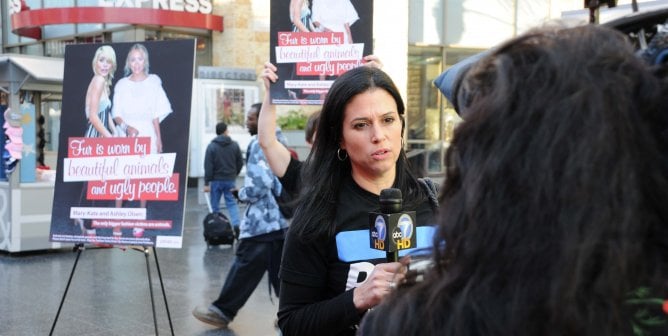Video: Mohave Sanctuary Welcomes Bears Saved From Traveling Act
Bears With Arthritis, Skin Conditions, Mental Stress Will Never Be Forced to Perform Again After Victorious PETA Campaign
For Immediate Release:
May 10, 2018
Contact:
David Perle 202-483-7382
Following a vigorous PETA campaign, five bears once used in a much-criticized, Texas-based traveling act called The Great Bear Show have arrived at the Keepers of the Wild sanctuary in Valentine, and a just-released video shows them settling into their new home. PETA covered costs associated with the rescue, including helping to pay for the bears’ new habitat.
While on the road, The Great Bear Show confined these bears to a barren cage, chained them to a chair for photo ops with the public, and forced them to perform tricks that were confusing and uncomfortable to them, including standing on their hind legs and rolling on a barrel. PETA tipped off federal authorities to the bears’ distress, prompting numerous citations for violating the federal Animal Welfare Act. Nineteen-year-old Cindi was repeatedly found pacing, a sign of psychological distress; 27-year-old Andy was kept on hard concrete floors despite having painful arthritis; and 4-year-old Barney showed signs of an irritating skin condition for years. At Keepers of the Wild, the bears now swim in a spacious pool, lie on grass near their dens, and take long naps under shady trees.
“In nature, bears explore, forage, swim, and den in vast home ranges, while bears used in traveling exhibitions lose their freedom and know only that they must perform,” says PETA Foundation Director of Captive Animal Law Enforcement Brittany Peet. “PETA is celebrating a huge victory as the final curtain drops on The Great Bear Show and these five bears enjoy their new life in a spacious home.”
PETA—whose motto reads, in part, that “animals are not ours to use for entertainment”—notes that The Great Bear Show was repeatedly cited for failing to provide animals with adequate veterinary care and space. Other citations included for risking the animals’ and the public’s safety by failing to secure bears properly during photo op sessions—in which the bears were separated from the public only by a plexiglass divider.
For more information, please visit PETA.org.


